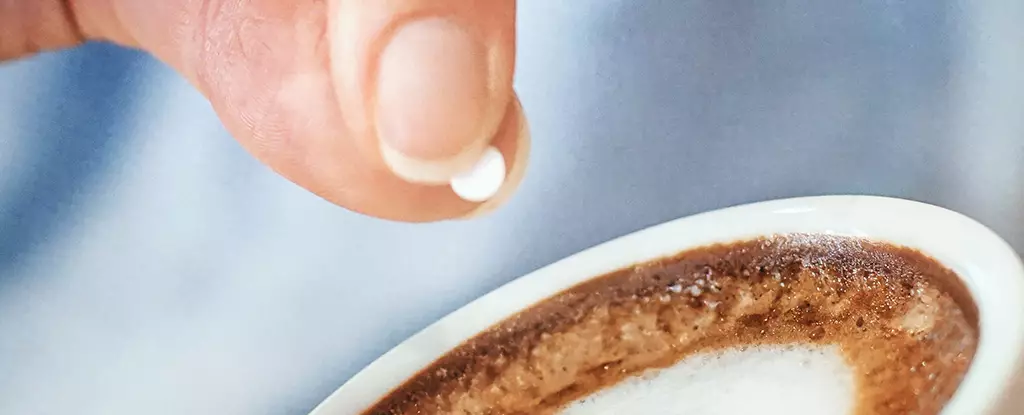In recent years, the health implications of artificial sweeteners have captivated public discourse, sparking debates among nutritionists, health professionals, and consumers alike. While many view these sugar substitutes as mere calorie savers, recent research suggests that the applications of artificial sweeteners like saccharin may extend beyond taste preferences and weight management. A groundbreaking study conducted by a team from Brunel University in the UK reveals a compelling and unexpected dimension to saccharin: its role in combating antibiotic resistance, a growing and alarming public health crisis.
Antibiotic resistance occurs when bacteria evolve to resist the effects of medications designed to kill them, leading to infections that are increasingly difficult to treat. The rise of these so-called “superbugs” poses a serious threat to healthcare, making it imperative for researchers to explore innovative solutions. The recent findings involving saccharin deserve our attention, not only for their scientific significance but also for their potential real-world applications against one of modern medicine’s most formidable challenges.
A Journey into the Microbial Battlefield
The study led by microbiologist Ronan McCarthy highlights the remarkable interaction between saccharin and various bacterial strains. The research team conducted controlled lab tests to assess how saccharin interferes with the structural integrity of bacteria such as Staphylococcus aureus and Escherichia coli. Saccharin has traditionally been appreciated for its sweetening properties, but these findings open a new frontier: a possible role as a powerful antimicrobial agent.
What is particularly fascinating is saccharin’s ability to disrupt the cellular walls of harmful bacteria, leading them to deform and eventually perish. This mechanism not only obliterates the bacteria but also creates vulnerabilities that allow conventional antibiotics to penetrate more easily, thereby maximizing their efficacy. McCarthy’s statement that “saccharin breaks the walls of bacterial pathogens” encapsulates the substance’s dual role as both an antibacterial agent and an enhancer of existing treatments.
From Lab to Application: The Promise of Saccharin
Furthering the innovation, the researchers successfully created a surgical dressing incorporating saccharin. The implications of this development could be profound, particularly for wound care. During tests involving pig skin, the saccharin-infused dressing outperformed traditional materials like silver in reducing bacterial levels. Such advancements suggest not only versatility but also a significant leap in how we approach infection control in clinical settings.
This breakthrough epitomizes the ongoing exploration of unexpected applications for established compounds. The idea that a common artificial sweetener can become an ally in the battle against stubborn infections highlights the necessity of creative thinking and rigorous scientific inquiry in medicine today. McCarthy characterizes the findings as “very exciting,” emphasizing that a readily available compound could circumvent the lengthy and costly processes typically required to develop new antibiotics.
The Bigger Picture: Addressing a Global Health Crisis
The reality of antibiotic resistance is sobering; estimates suggest that resistant infections contribute to millions of deaths annually. As bacteria adapt and evolve, the pharmaceutical industry grapples with the staggering costs and extended timelines necessary to produce new antibiotics. In this light, saccharin stands out as a beacon of hope, offering a method to rejuvenate existing antibiotics and provide a new strategy to tackle resistant infections—a therapeutic approach that the medical community urgently needs.
Nevertheless, the findings raise cautionary notes about the overall effects of artificial sweeteners on human health. While saccharin demonstrates promise in laboratory settings, the complexity of human biology warrants further investigation. It is crucial to explore not only the antimicrobial efficacy but also the broader implications of regular saccharin consumption.
The potential of saccharin in combating antibiotic resistance represents a fascinating intersection of dietary science and microbiology. As researchers continue to unravel the implications of this sweet compound, it stands as a testament to the untapped possibilities that may lie in our everyday substances. Emphasizing the necessity for innovative solutions to urgent health issues, this breakthrough challenges us to reconsider the compounds we often overlook in our diets. The future may well depend on these sweet secrets, revealing that even the simplest ingredients can yield extraordinary results in the ongoing fight for global health.

